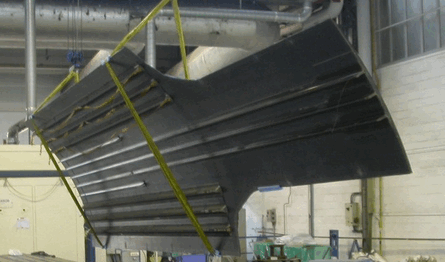Airbus will roll out the first of two carbonfibre fuselage demonstrator barrels this month as it prepares the ground for production of the A350 XWB.
The A350 fuselage's structural design comprises carbonfibre panels and frames, together with metallic cross-beams - a departure for Airbus which has traditionally used aluminium for the bulk of the fuselage structure. "We need to have a very mature technology both from the technical and the manufacturing point of view," says A350 programme chief Didier Evrard. The goal of the demonstrator programme is to ensure both "maturity and certification" compliance of the design, he adds.
 |
|---|
© Airbus |
Two fuselage demonstrators are being assembled at the Airbus plant in St Nazaire. The first, an 11m (36ft)-long barrel, will be rolled out towards the end of May with a larger, 18m-long version to follow. Both will be transported to Airbus's Hamburg plant where they will undergo fatigue-damage tolerance and static tests.
Evrard says that the fuselage section demonstrators will support methods and tools development for the carbonfibre and hybrid structure of the fuselage. "They will also support the manufacturing-processes development and certification process," he adds.
A 17m-long wing demonstrator (representative of the inner and mid torsion box) is also being assembled at Airbus's Broughton, UK plant using skin panels manufactured by German and Spanish factories.
 |
|---|
| © Airbus |
Airbus's factories have already produced a number of carbonfibre technology demonstrators including a 16m-long shell, a Section 19 (rear fuselage) full barrel, a Section 15 keel panel and a nose section lower panel. Window drilling into carbonfibre panels has also been demonstrated and carbonfibre stringer, fuselage frames and window frames have been produced.
Final assembly of the first A350 is scheduled to commence in early 2011. The twinjet is due to make its first flight in early 2012 and enter service in 2013.
Source: Flight International
















